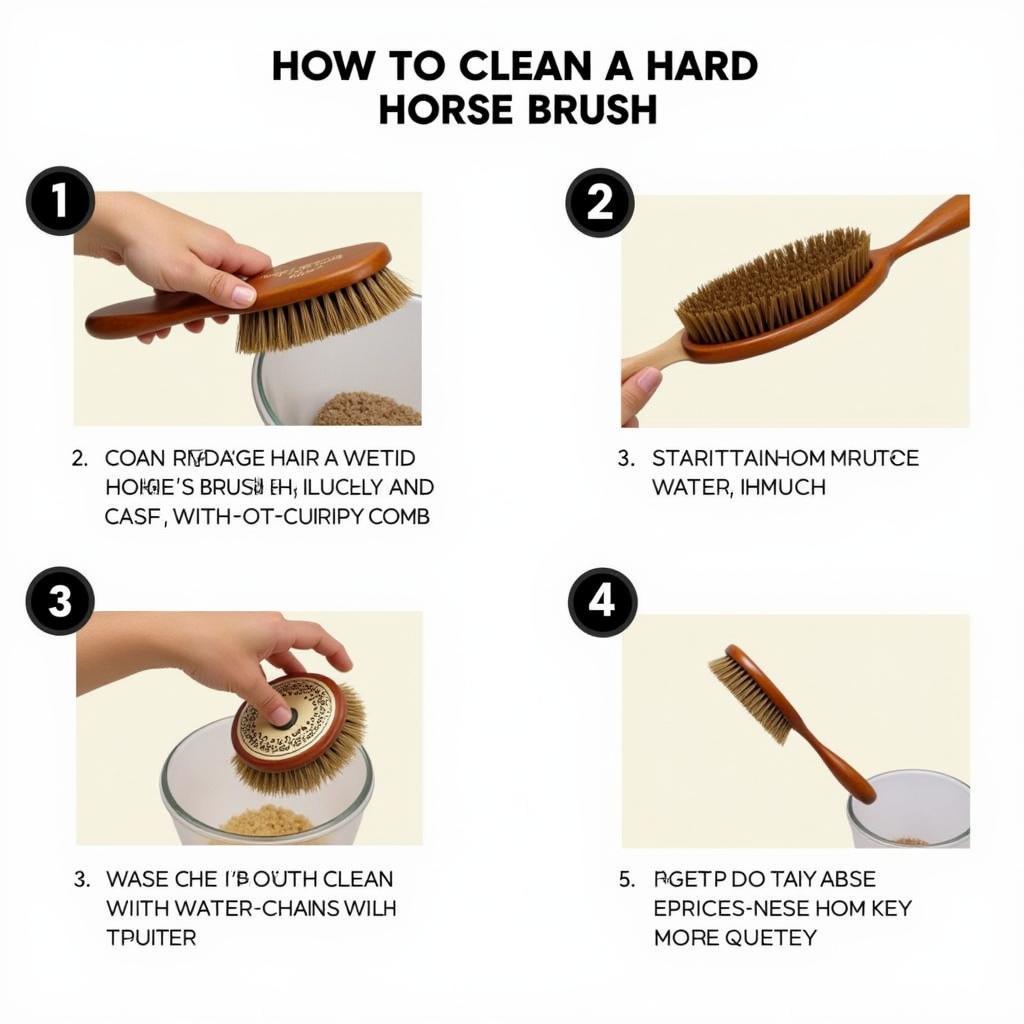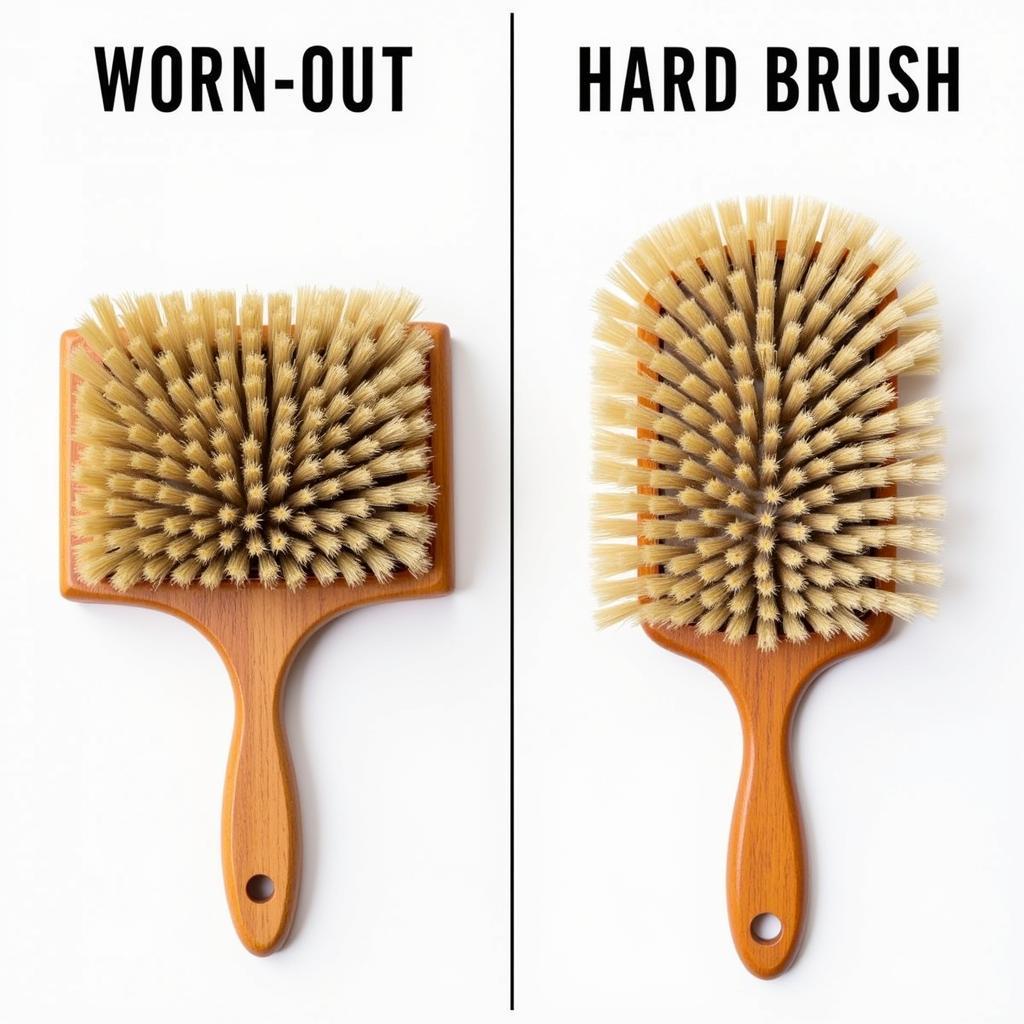A Hard Brush For Horses is a crucial grooming tool, essential for removing dried mud, sweat, and loose hair. Using the right hard brush contributes significantly to your horse’s overall health and well-being, keeping their coat clean and shiny. It’s an investment in their comfort and appearance. Let’s delve deeper into understanding the benefits and proper usage of a hard brush.
Why is a Hard Brush Important for Horse Grooming?
A hard brush isn’t just about aesthetics; it plays a vital role in your horse’s health. Regular grooming with a hard brush stimulates blood circulation, distributes natural oils for a healthy sheen, and helps you identify any potential skin issues early on. It effectively removes dirt and debris that can irritate the skin and cause discomfort. Think of it as a deep cleanse for your horse’s coat.
Choosing the Right Hard Brush
There are various types of hard brushes available, each designed for specific purposes. Some are stiffer for removing stubborn mud, while others are slightly softer for sensitive horses. Consider your horse’s individual needs and coat type when selecting a hard brush. What works for a thick-coated draft horse might be too harsh for a fine-coated Thoroughbred.
How to Use a Hard Brush on Your Horse
Using a hard brush correctly is crucial to avoid discomfort or injury to your horse. Always use short, flicking motions in the direction of hair growth. Avoid applying excessive pressure, especially over bony areas. Begin at the neck and work your way back, being gentle around sensitive areas like the face and belly.
Maintaining Your Hard Brush
Like any grooming tool, a hard brush requires regular cleaning to remain effective and hygienic. Remove hair and debris after each use, and wash the brush with soap and water periodically. Allow the brush to dry completely before storing it to prevent mold and mildew growth. Proper care will extend the life of your brush and ensure it remains a valuable tool in your grooming kit.
 Cleaning a Hard Horse Brush
Cleaning a Hard Horse Brush
Common Mistakes to Avoid with a Hard Brush
Over-brushing or using excessive pressure can irritate your horse’s skin and cause discomfort. Avoid using a hard brush on sensitive areas or on a horse with thin skin or existing skin conditions. Always observe your horse’s reactions during grooming and adjust your technique accordingly. A slicker brush for horses might be a better choice for sensitive areas. For minor cuts and abrasions, consider using a liquid bandage for horses.
“A common mistake I see is people using a hard brush on their horse’s legs,” says renowned equine veterinarian Dr. Amelia Shepherd. “The skin on the legs is very thin and sensitive, making it prone to irritation and injury from harsh brushing.” Instead, opt for a softer brush or a stiff horse brush specifically designed for legs.
When to Replace Your Hard Brush
Over time, the bristles of a hard brush will wear down, reducing its effectiveness. If the bristles are bent, broken, or falling out, it’s time to replace your brush. A worn-out brush won’t clean your horse effectively and may even cause discomfort. Investing in a new horse scratching brush occasionally is part of responsible horse ownership. You may also consider the benefits of olive oil horses for maintaining healthy skin and coat.
 Worn Out Horse Brush vs. New Horse Brush
Worn Out Horse Brush vs. New Horse Brush
Conclusion
A hard brush for horses is a fundamental grooming tool that plays a significant role in their overall health and well-being. By understanding the benefits, proper usage, and maintenance of a hard brush, you can ensure your horse’s coat remains clean, healthy, and shining. Remember to choose the right brush for your horse’s individual needs and always prioritize their comfort.
FAQ
- How often should I use a hard brush on my horse?
- Can I use a hard brush on all parts of my horse’s body?
- What are the signs of a worn-out hard brush?
- How do I store my hard brush properly?
- What other grooming tools should I use in conjunction with a hard brush?
- What type of hard brush is best for a sensitive horse?
- Can I use a human hairbrush on my horse?
Common Scenarios
- Scenario: Your horse has rolled in mud. Solution: Use a stiff hard brush to remove the dried mud, followed by a softer brush to finish.
- Scenario: Your horse has sensitive skin. Solution: Choose a softer hard brush or avoid using it altogether on sensitive areas.
- Scenario: Your horse’s coat is dull and dry. Solution: Regular grooming with a hard brush can stimulate natural oil production and improve coat shine.
Further Reading
Explore more about horse care on Justus Horses USA. Check out our articles on various grooming tools and techniques to further enhance your horse care knowledge.
Contact Us
For further assistance, contact us at Phone Number: 0772127271, Email: [email protected] Or visit us at: QGM2+WX2, Vị Trung, Vị Thuỷ, Hậu Giang, Việt Nam. We have a 24/7 customer service team.